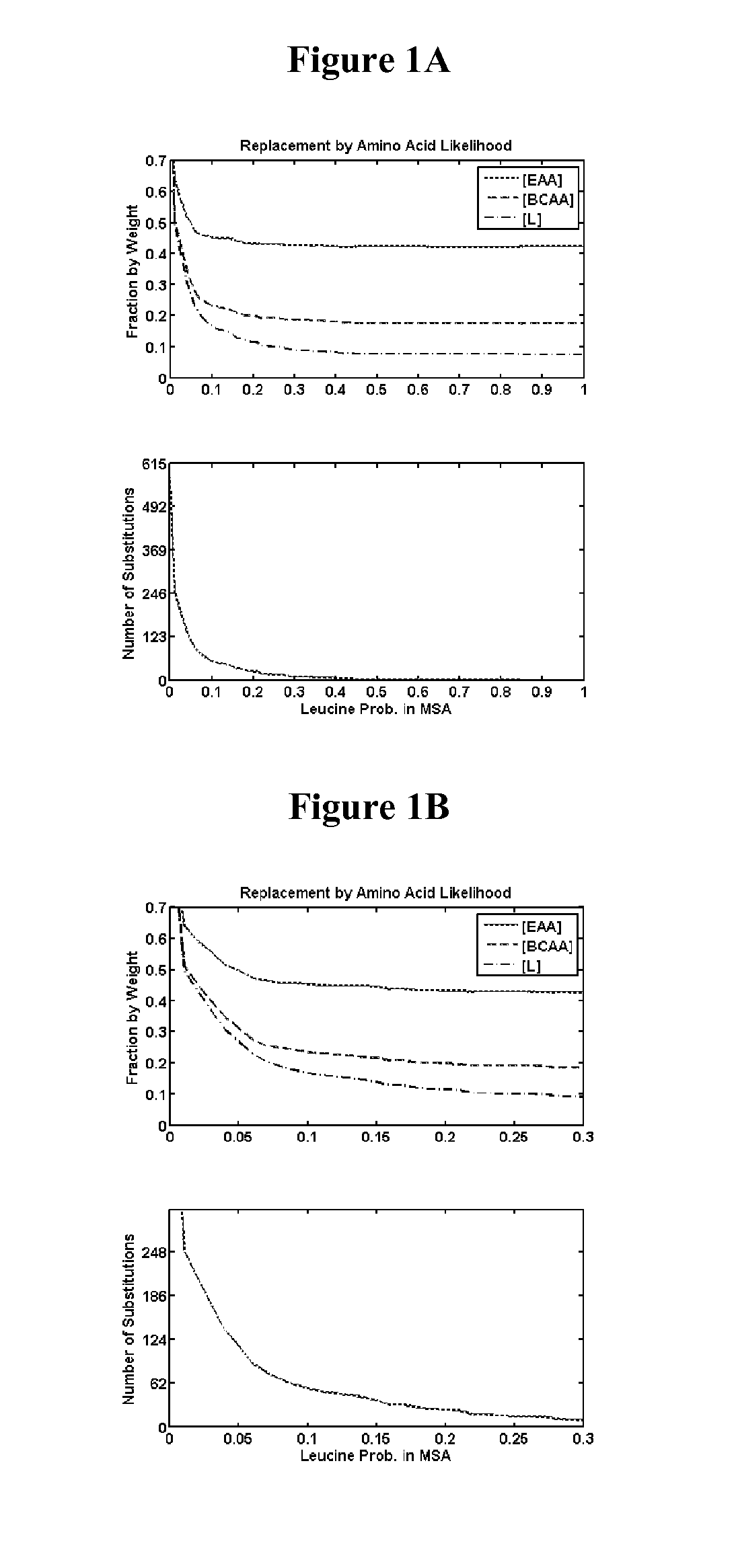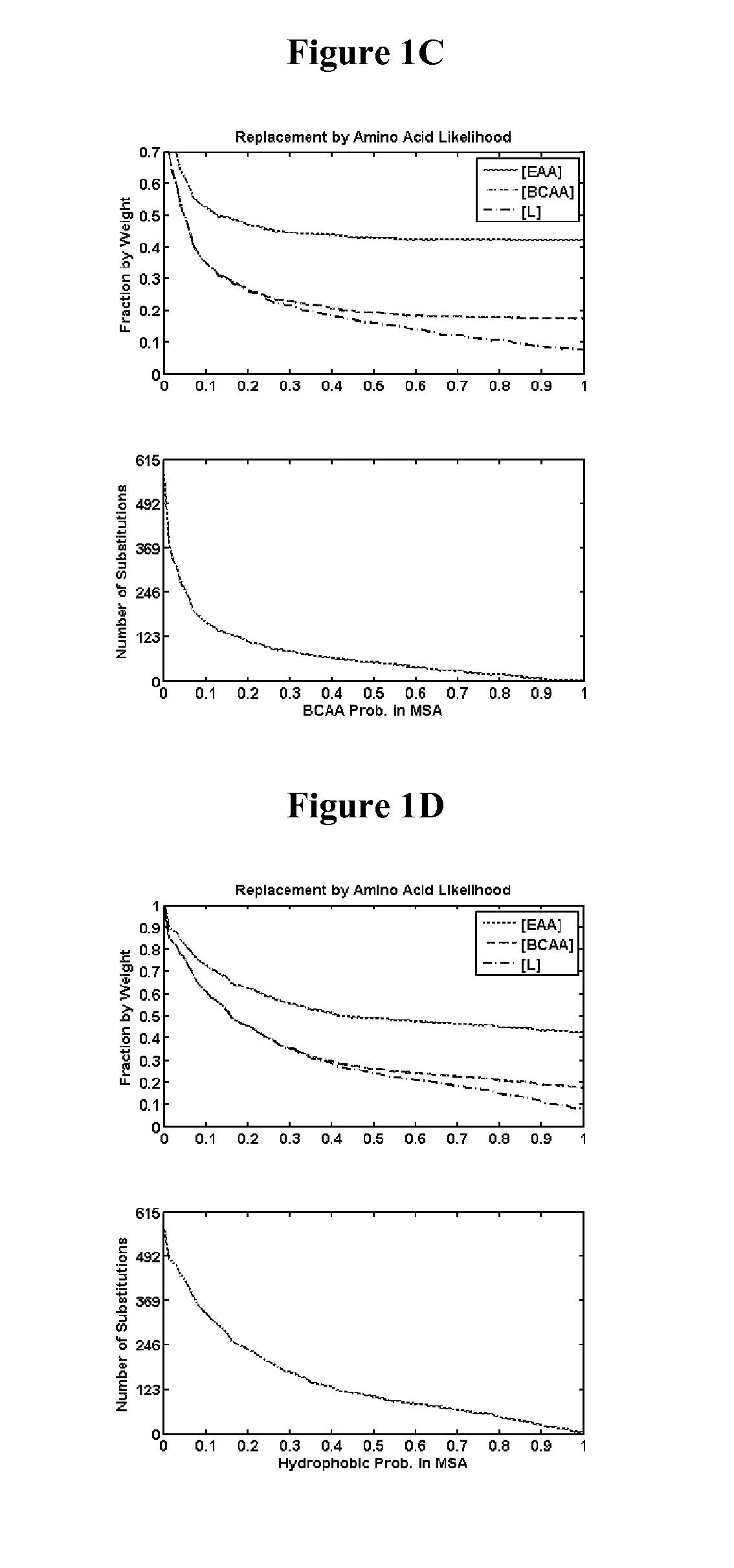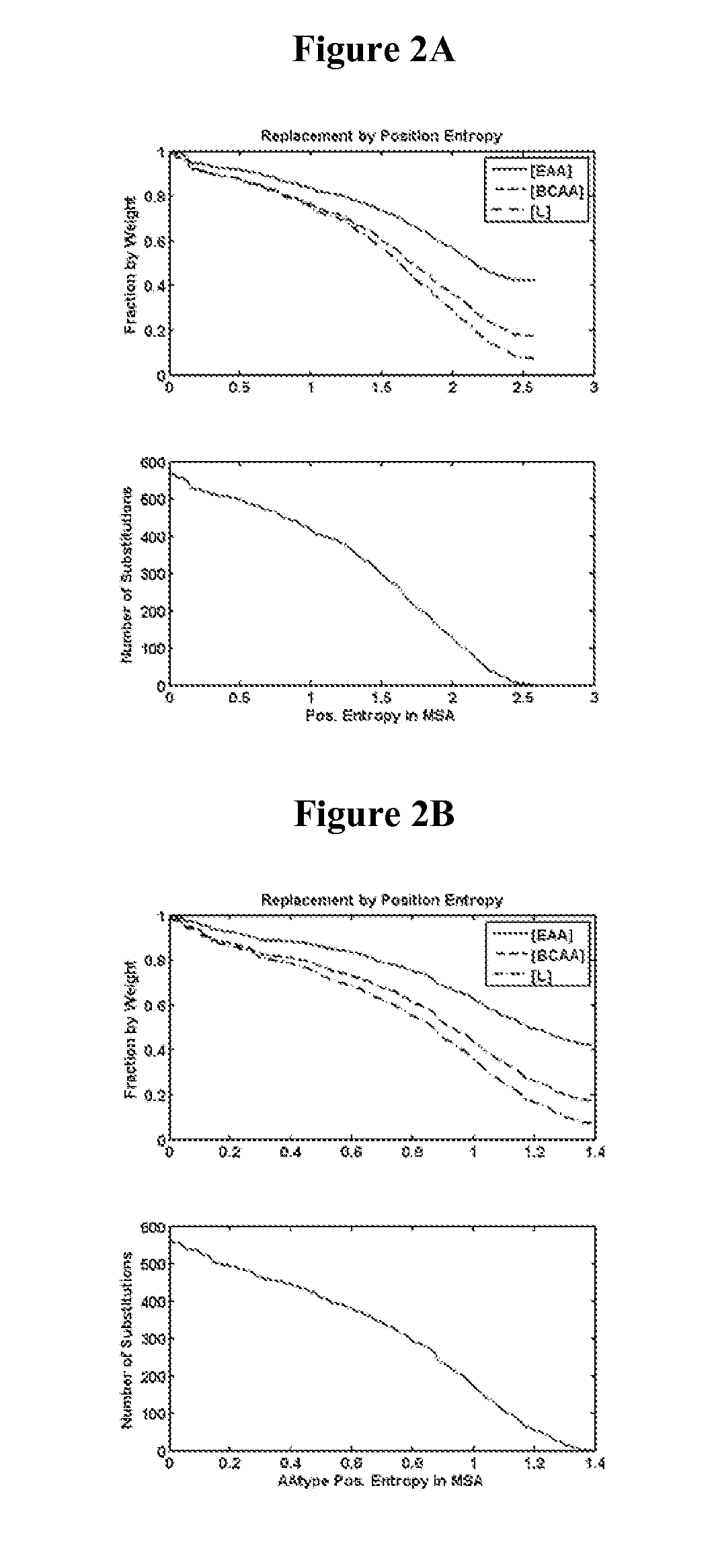Engineered secreted proteins and methods
- Summary
- Abstract
- Description
- Claims
- Application Information
AI Technical Summary
Benefits of technology
Problems solved by technology
Method used
Image
Examples
example 1
Construction of Protein Libraries
[0388]Reference secreted proteins were identified in the annotated proteome for selected microorganisms as defined by the UniProt database. Specifically, proteins that have been observed and / or annotated as being present outside the various cellular plasma membranes, were identified. This procedure was applied to all species of the genera Acremonium, Aspergillus, Chrysosporium, Corynebacterium, Fusarium, Penicillium, Pichia pastoris, Rhizopus, Synechocystis, Synechococcus, Trametes, and Trichoderma, as well as to Bacillus subtilis, Escherichia coli, and Saccharomyces cerevisiae, to build a protein library. The selected proteins from each genus (species) are listed using their UniProt IDs in Appendix A.
[0389]Non-limiting examples of proteins and fragments of proteins are provided in the following Examples.
example 2
Selection of Reference Secreted Proteins for Engineering
[0390]The NCBI Conserved Domain Database (Marchler-Bauer A., and Bryant, S. H. “CD-Search: protein domain annotations on the fly”. Nuc. Acid. Res. (2004) 32: W327-W331) includes protein domains and / or folds used in previous studies to reengineer protein-protein binding interactions. (Binz, K H, and Pluckthun, A. “Engineered proteins as specific binding reagents”. Curr. Op. Biotech. (2005) 16: 459-469; Gebauer, M. and Skerra, A. “Engineered protein scaffolds as next-generation antibody therapeutics”. Curr. Op. Chem. Biol. (2009) 13: 245-255; Lehtio, J., Teeri T. T., and Nygren P. A. “Alpha-Amylase Inhibitors Selected From a Combinatorial Library of a Cellulose Binding Domain Scaffold”. Proteins: Struct., Func., Gene., (2000) 41: 316-322; and Olson C A and Roberts R W. “Design, expression, and stability of a diverse protein library based on the human fibronectin type III domain”. Prot. Sci. (2007) 16: 476-484.) As such, the datab...
example 3
Identification of Amino Acid Positions in Reference Secreted Proteins for Substitution—Methods
[0400]Positions in reference secreted proteins for substitution with nutritive amino acids were identified by analyzing position amino acid likelihood, position entropy, mutation effect on relative folding free energy, and secondary structure type.
[0401]Position Amino Acid Likelihood
[0402]For a given query protein sequence, homologous proteins were identified by performing local sequence alignments of the query with NCBI's library of non-redundant proteins. The initial local alignments were performed using the blastp program from the NCBI toolkit v.2.2.26+(Altschul S. F., Gish W., Miller W., Myers E. W., and Lipman D. J. “Basic Local Alignment Search Tool”. J. Mol. Biol. (1990) 215: 403-410) with an e-value cutoff of 1, a gap opening penalty of −11, a gap extension penalty of −1, and the BLOSUM62 scoring matrix. The multiple sequence alignment of the resulting library was performed using th...
PUM
| Property | Measurement | Unit |
|---|---|---|
| Weight | aaaaa | aaaaa |
| Fraction | aaaaa | aaaaa |
| Fraction | aaaaa | aaaaa |
Abstract
Description
Claims
Application Information
 Login to View More
Login to View More - R&D
- Intellectual Property
- Life Sciences
- Materials
- Tech Scout
- Unparalleled Data Quality
- Higher Quality Content
- 60% Fewer Hallucinations
Browse by: Latest US Patents, China's latest patents, Technical Efficacy Thesaurus, Application Domain, Technology Topic, Popular Technical Reports.
© 2025 PatSnap. All rights reserved.Legal|Privacy policy|Modern Slavery Act Transparency Statement|Sitemap|About US| Contact US: help@patsnap.com



